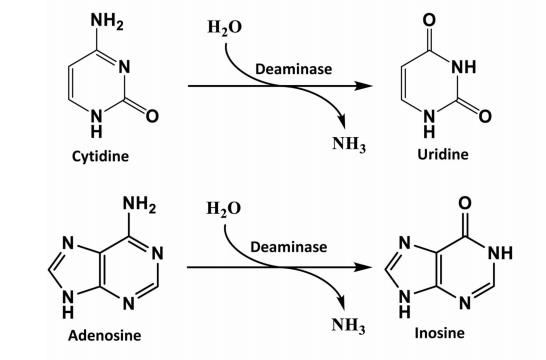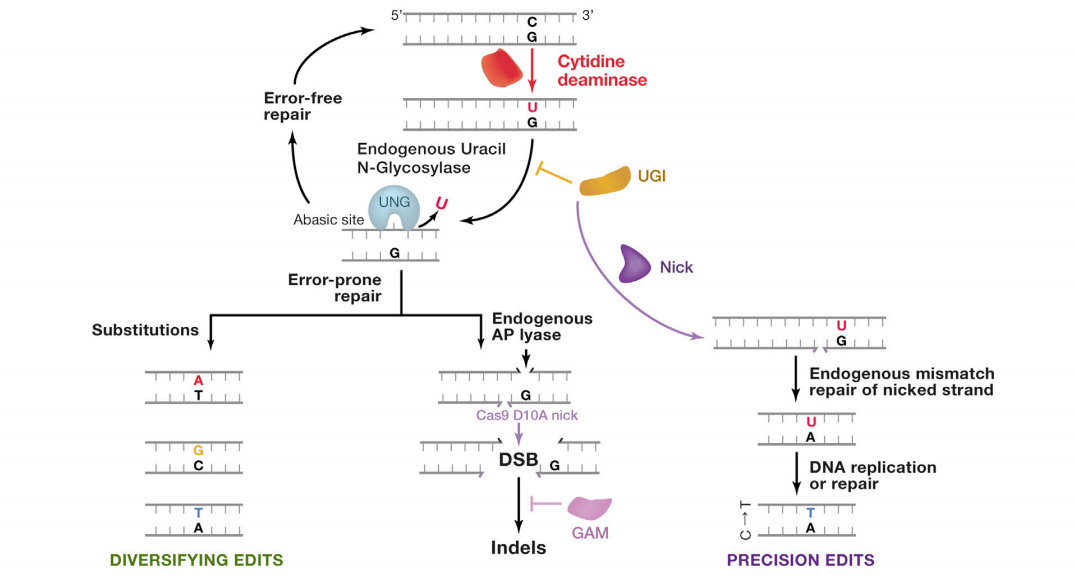
Our promise to you:
Guaranteed product quality, expert customer support.
 24x7 CUSTOMER SERVICE
24x7 CUSTOMER SERVICE
 CONTACT US TO ORDER
CONTACT US TO ORDER
Base Editing by CRISPR 
CRISPR/Cas9 PlatformCB provides a base editing service for generating a point mutation. By this service, one base can be converted to another: C to T, or A to G. With years of experience in genome editing, our scientists are dedicated to bring customer high-quality service with the latest technology.
CRISPR/Cas9 system is one of the most common used gene-editing tools, which was first described as an immune defense system. Considering its easy-to-use, simple-to-design and multiplexed engineering, CRISPR/Cas9 is widely used for genome engineering in microbes, mammalian cells/models and plants. However, the inefficiency of precise base editing and off-target activities remains. To get rid of this situation, base editing is developed as a new genome editing technology, which can be widely used in mammalian cells, plants, microbes and model organisms. Base editing enables the irreversible conversion of a specific DNA base into another at a targeted genomic locus, for example conversing C to T, or A to G. Unlike other genome-editing tools, base editing can be achieved without double-strand breaks. When introducing a point mutation at a target locus, base editing is more efficient than traditional genome editing techniques. Since many genetic diseases arise from point mutations, base editing has important applications in disease research.

Base editors use facets of CRISPR/Cas9-based systems by combining enzymes with Cas9 variants (dCas9/Cas9 nickase) to modify DNA. The Cas9 mutants function as a DNA targeting module together DNA modified enzyme to specific DNA sequences for base editing. The first base editor (BE1), which was developed in 2016, composed of dCas9 and the APOBEC deaminase successfully converted cytidine into thymidine. This base editor has a catalytic window of activity of -16 to -12 bp from the PAM sequence. When guided by dCas9, APOBEC deaminates a specific cytidine to uracil and subsequently becomes to T-A base pairs via DNA repair and replication. To date, multiple base editors have been developed to meet different needs. For example, BE2 is better for applications that require no indel information, while BE3 is the most efficient one with low levels of indels.

CRISPR/Cas9 PlatformCB offers a base editing service with trusted results and affordable price. Once you place an order, our skilled staff will work for your project with excellent platform under the supervision of experienced scientists. We are waiting for your interesting project. For further information, please feel free to contact us.
Reference
- Ayman, E., et al. (2018) ‘CRISPR base editors: genome editing without double-stranded breaks’. Biochemical Journal, 475, 1955-1964
- Vivien, M., et al. (2018) ‘Base editing a CRISPR way’. Nature Methods, 15, 767-770
- Nicole, M., G., et al. (2017) ‘Programmable base editing of A-T to G-C in genomic DNA without DNA cleavage’. Nature, 551, 464-471
- Gaelen, T., H., et al. (2017) ‘Methods and applications of CRISPR-mediated base editing in eukaryotic genomes’. Molecular Cell, 68, 26-43